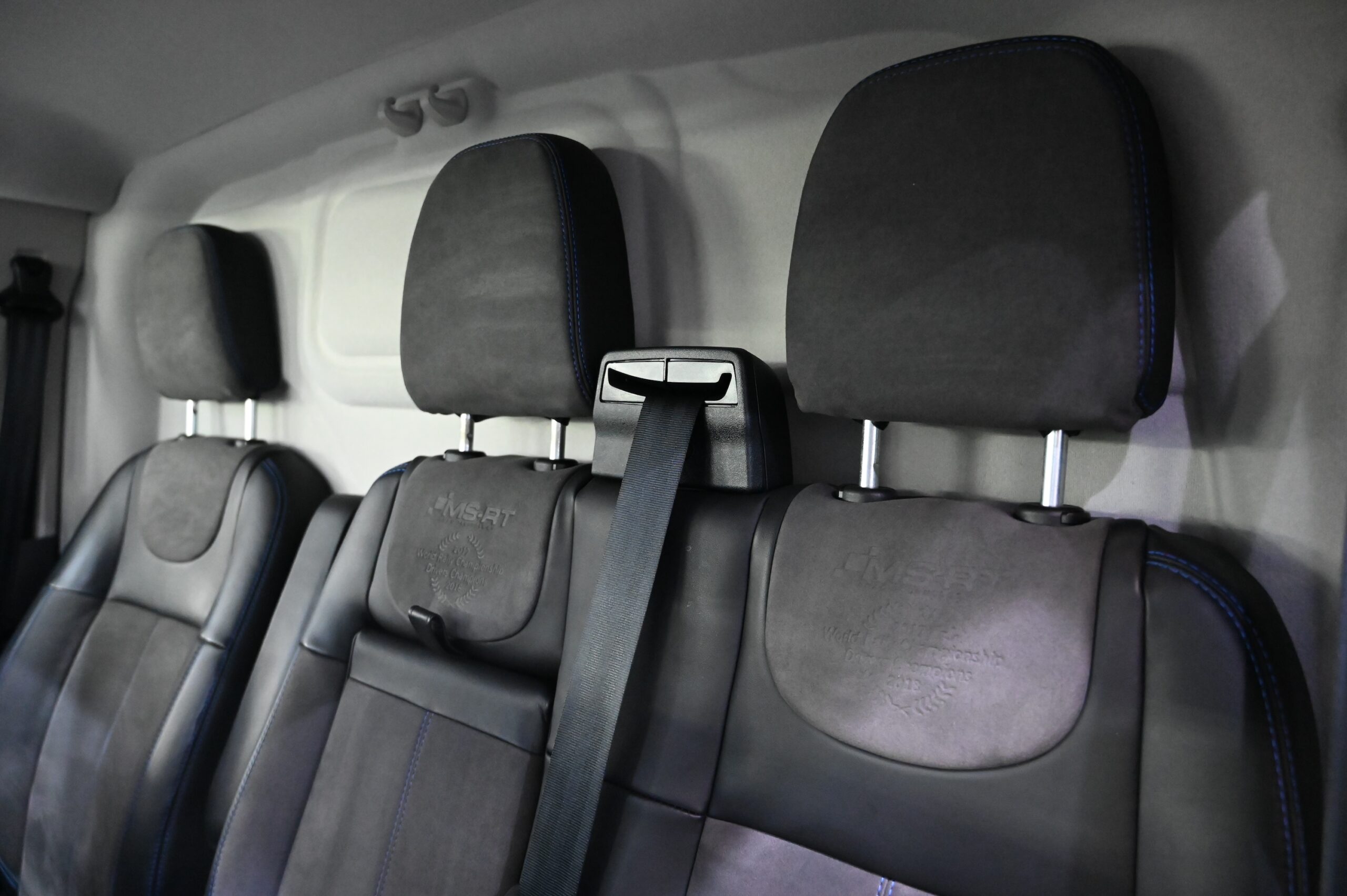The commercial vehicle market is expanding rapidly. Vans have become essential tools for a range of different tasks. From mobile businesses and family adventures to trades and delivery services, vans offer the versatility, storage, and customisation options to meet the demand.
With that in mind, the list of features on new vans these days can be endless, and somewhat daunting. So, we’re going to help you identify what features to look for.
From essential features to must-have options, knowing what to look for in a van can save you time, money, and ensure you’re ready for whatever the road brings.
Ample Storage Vans
Let’s be realistic, the last thing you want to do is buy a van and then realise you need more storage space. So, this should be the first thing to consider before your purchase.
Different Van Sizes
Vans like the Ford Transit Connect can be more than enough room for some customers. However, others may be filling out a full Citroen Relay to the brim.

Technology Integration in Vans
Modern commercial vehicles are equipped with technology that can improve your driving experience, efficiency and your fuel economy.
As modern technology develops manufacturers are able to improve fuel consumption and vehicle health with telematics and data that will make your driving experience more efficient by reducing the likelihood of unexpected repairs, these systems enhance efficiency and keep vehicles on the road for longer with fewer interruptions.
GPS Navigation
GPS navigation is essential if you plan on going on long journeys across different cities.
Modern GPS systems can include weather integration, multi-stop route planning , 3D mapping and Augmented reality navigation giving you an overlay on to the real world view seen through your vehicle screen making navigation to your exact destination easier than ever.
Connectivity on the Move
Bluetooth and Wi-Fi hotspots keep you connected on the go. This is essential for almost all customers in today’s market and luckily almost all modern vehicles will have this function available to you but its worth checking to ensure.

Safety Features in Vans
Safety is a top priority when choosing a van, and modern features can make a big difference. Advanced braking systems like anti-lock braking (ABS) and electronic brakeforce distribution (EBD) help maintain control in emergency situations. Paired with airbags for driver and passenger protection, these features ensure everyone stays safe in the event of a crash.
Lane Assist
Lane-keeping assist and blind-spot monitoring are especially useful for avoiding accidents while driving in traffic. Lane-keeping assist provides steering corrections if the van drifts, while blind-spot sensors alert the driver to vehicles in adjacent lanes.
Rear View Camera
Additionally, rear-view cameras and parking sensors are invaluable for reversing and parking, making it easier to avoid obstacles in tight spaces.
Automatic Emergency Braking
For added safety on long drives, adaptive cruise control adjusts the van’s speed to maintain a safe distance from other vehicles. Automatic Emergency Braking (AEB) can take it a step further by applying the brakes if a collision is imminent. Finally, pedestrian detection systems automatically brake if they detect someone in the van’s path, reducing the risk of accidents in busy areas.
Payload
To calculate your van’s payload capacity, you only need two pieces of information: the GVW (Gross Vehicle Weight) and the kerb-weight. Both of these values can be found in the vehicle manual. GVW represents the maximum weight the vehicle can safely carry, including the van itself, operational fluids such as fuel and oil, cargo, and passengers. Kerbweight refers to the weight of the vehicle without any passengers or cargo, just the vehicle as it is.
To calculate your payload capacity, simply subtract the kerbweight from the GVW. For example, if a van has a GVW of 3000kg and a kerbweight of 2400kg, it means the van can safely carry a payload of 600kg.
Be aware of the regulations, understand your vehicle, and most importantly—know its limits.
Comfort
You don’t want to be driving around in an uncomfortable vehicle for the next x amount of years. Comfort is key, the average UK driver spends over 25 days a year in their car so choosing one you’re comfortable with is key.
Ultimately only you can decide what van is comfortable for you as it’s up to preference but the likely scenario is the more modern vans will be more comfortable and ergonomic with the ability to adjust your seat in 2 parallels.
Modern vehicles also have easier to reach controls for the driver. Older models are known for some of their inconvenient control buttons being a little too out of reach. Luckily this has now been eradicated for new models with driver ergonomics at the forefront of design for most manufacturers.

Customisation Options
One of the biggest advantages of choosing a van is its adaptability. Many models come with a range of customisation options to suit your needs, whether you’re looking to add extra shelving, install temperature control for transporting sensitive goods, or even create a mobile workshop. Options for interior layouts, external storage, and accessories let you turn a standard van into a tool for your tasks. This flexibility not only makes your van work smarter for your needs but also enhances its resale value.
Book a Test Drive
To fully know if you are going to be happy with your vehicle you will need to test drive it to be sure. You can book a test drive with any of our vehicles on the vehicle page or alternatively you can get in touch with us here to book over the phone or talk about any general enquiries.
